Growing Apples: It’s more than ‘plant the seed, harvest the fruit’
Mashing the Johnny Appleseed Legend
615 Narrows Road
Biglerville, Adams County
The situation
The York Gazette, in 1903, ran a series about Johnny Appleseed, a wanderer who planted apple trees. “They are not for himself,” one character said, explaining that Johnny Appleseed planted them so anyone passing by may enjoy an apple for themselves. “He wants to give apples to everybody.”
A century later, York Countians still tell the legend of Johnny Appleseed — a man donning a burlap bag for a shirt and a tin pot for a cap who traversed the settlements of Ohio. He plucked seeds from his leather bag, and inserted them into the ground as he traveled. As kids, we dream of adventures like this. Who wouldn’t want to hike our beautiful hills, planting delicious fruits for our neighbors to enjoy?
The real Johnny Appleseed, John Chapman, returned to the cider presses of Pennsylvania each year to collect seeds which he distributed along the banks of Ohio into the Northwest Territory during the early 19th century. While scholars agree that Americans have Chapman to thank for the plethora of apple trees in the New World, the stories over-romanticize fruit cultivation.
It’s tempting to perceive fruit production as a simple equation: plant the tree, pick the apple.
But, cultivation today requires much more than sticking a seed in the dirt. In fact, the apples you purchase at the grocery store require a great deal of money, attention, time, and labor to get them from tree to table.
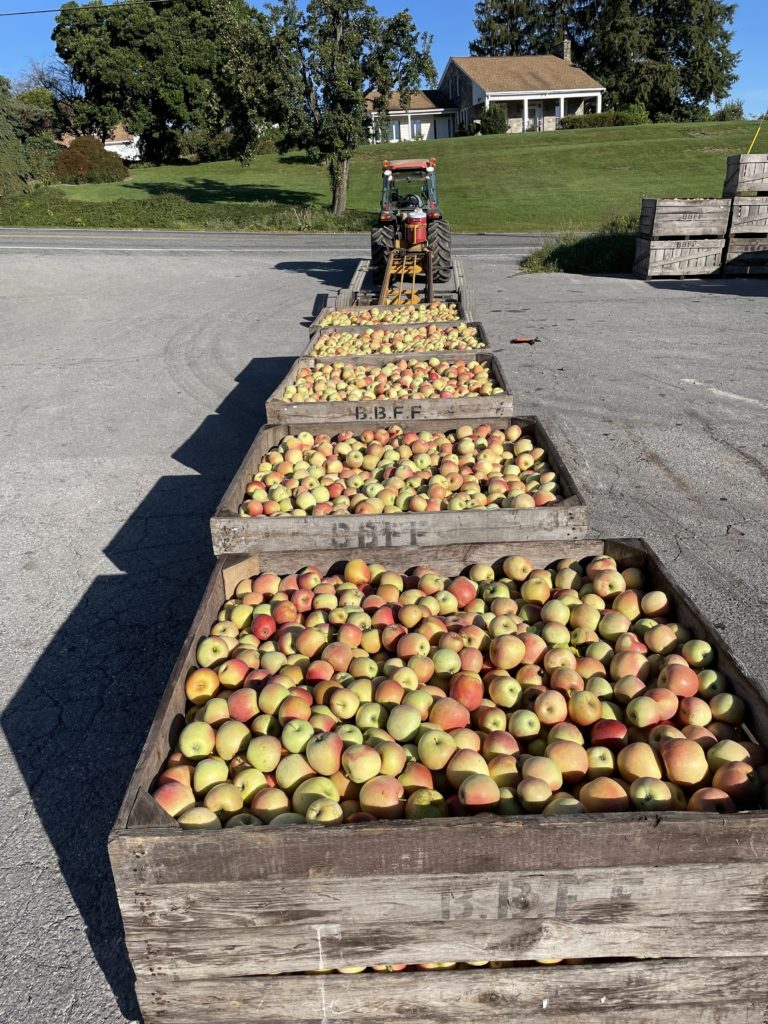
The witness
Sarah Lott Zost of Gardners in northern Adams County holds up a green and red apple. It’s grown so large so fast that it barely fits in her hand. “This imperfection,” she says pointing to a dent the size of a grain of rice, “means we can’t sell it fresh to a grocery store. Instead, we’ll sell it to a processing plant.”
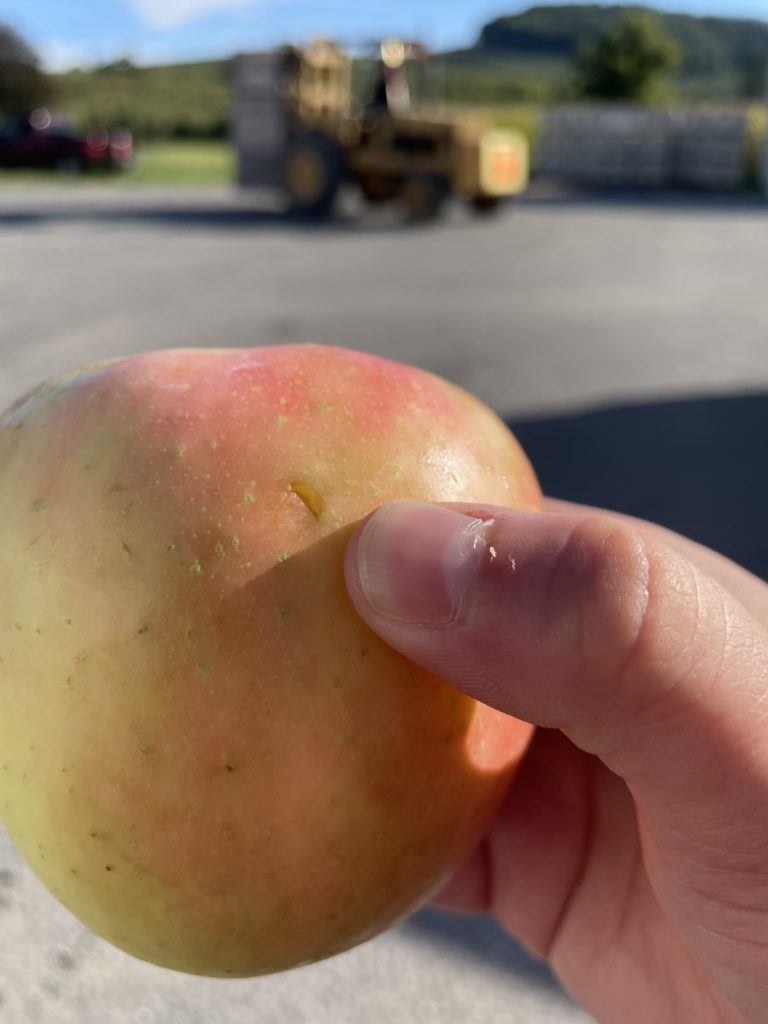
Before the rain, “we did everything we could to prepare for it,” Lott Zost says. They rearranged their picking schedule, changing crews, locations, and supplies. “It’s stressful. Sometimes I lose sleep trying to think of everything that needs done,” she says. “When Ida finally hit, we couldn’t do anything about it.” The next day she hesitantly ventured into the fields, assessing the damage.
While the fall harvest is her busiest time by far, Lott Zost and her crew work full-time, all year long. In the winter, they prune trees to allow sunshine to penetrate through the leaves. Without doing so, those red apples would stay eternally green. Green apples mean less income since grocers have strict color requirements (Fuji apples, for instance, must be 30 percent red to meet industry standards).
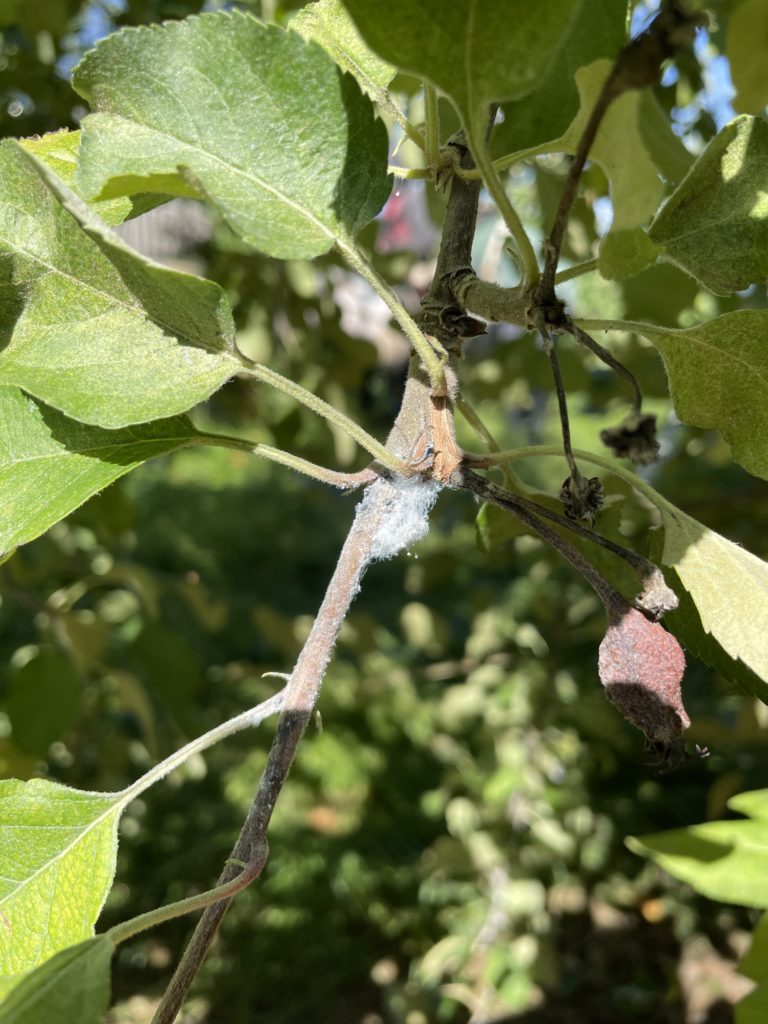
Again, however, it’s not as simple as seeing the aphids, spray the trees. Lott Zost has to time the spraying perfectly. The following are all a consideration:
- The larva cycle to treat at the optimal time.
- Avoid killing beneficial insects such as lacewings that eats aphids.
- The weather, since more than two inches of rain will wash the insecticide away.
- Harvest time to avoid harming workers.
Needless to say, it’s a difficult process.
Over 150 years ago, The York Gazette printed a story on “Progressive Agriculture.” In it, the author persuaded farmers in York County that science-based farming practices will yield better apple trees. Lott Zost values science and all the benefits associated with innovation.
Small, white bags dangle from the trees. “I wouldn’t touch them,” Lott Zost warns. They’re filled with milorganite, or processed human sewage from Milwaukee that repels deer — yet another invader demanding resources that growers must address.
Lott Zost also watches for nutrient deficiencies. When you see farmers spraying, it’s not always insecticide. Lott Zost and her crew spend half her time spraying potassium, zinc, and calcium to avoid “bitter pit,” or dark spots. “There’s this myth that we spray because we’re lazy,” Lott Zost says. “But we’re constantly battling to keep fruit available. The grocer demands nice fruit, and they’ll accept nothing less.”
“These apples were pretty on Tuesday [before the hurricane],” Jim Lott, Sarah Lott Zost’s dad, says. However, they didn’t harvest Tuesday because their resources were distributed elsewhere. “That hurts your stomach. Your heart hurts, too.” Events such as a rainy day seem inconsequential to us, but unleash extreme consequences in the orchards.
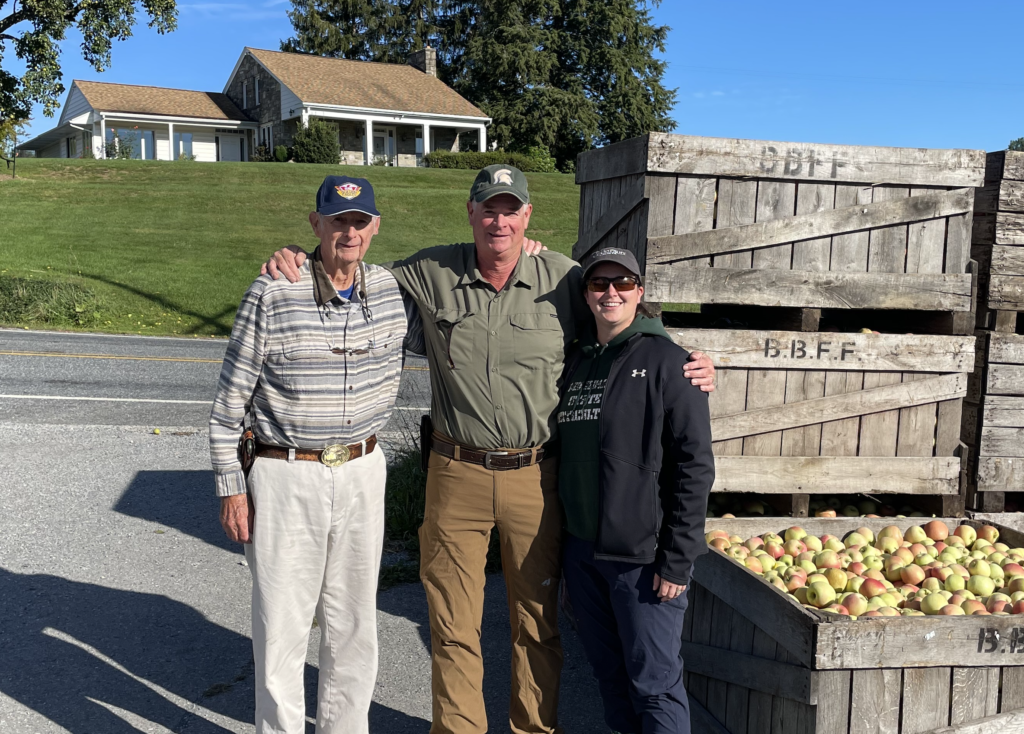
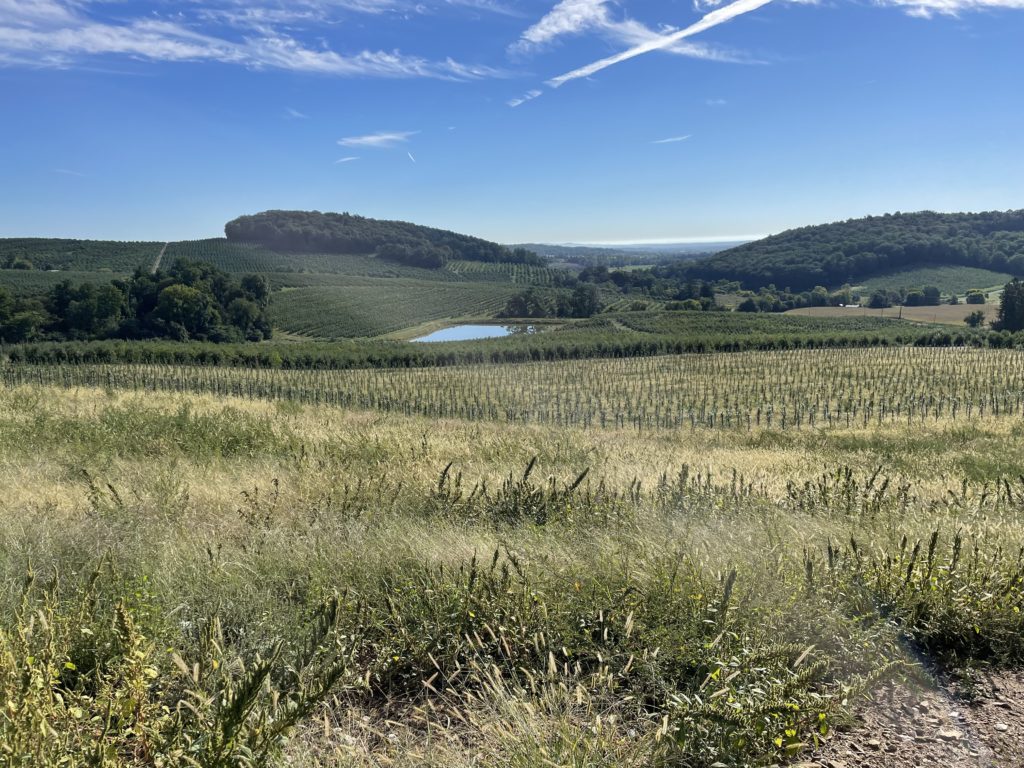
Mac Lott, Sarah’s grandfather, explains a lot has changed from when he was a boy working in the fields. His dad, for instance, used horses, not the tractors that Sarah uses.
Apple varieties represent another change. The Lotts don’t cultivate York County’s famous York Imperial apple anymore, even though the variety is still very popular with other growers. That’s because its oblong shape renders it useless as fresh apples, or ones sold to be eaten whole — their main focus.
Looking at the neighboring valley, Lott Zost points out a nearby orchard. While the Lotts cultivate fresh apples and the neighbor produces processing apples, they’re both seeking available land for future expansions — a finite resource.
Do you know what you’re planting in your garden in three years? That’s how many years of planning it takes for apple growers. Once nurseries start the rootstock, it takes close to 36 months for it to grow large enough for growers like Lott Zost to plant them in the fields. This past year, Lott Zost ran out of trees because of a supply chain issue. A hillside lays in wait, rendering no profit.
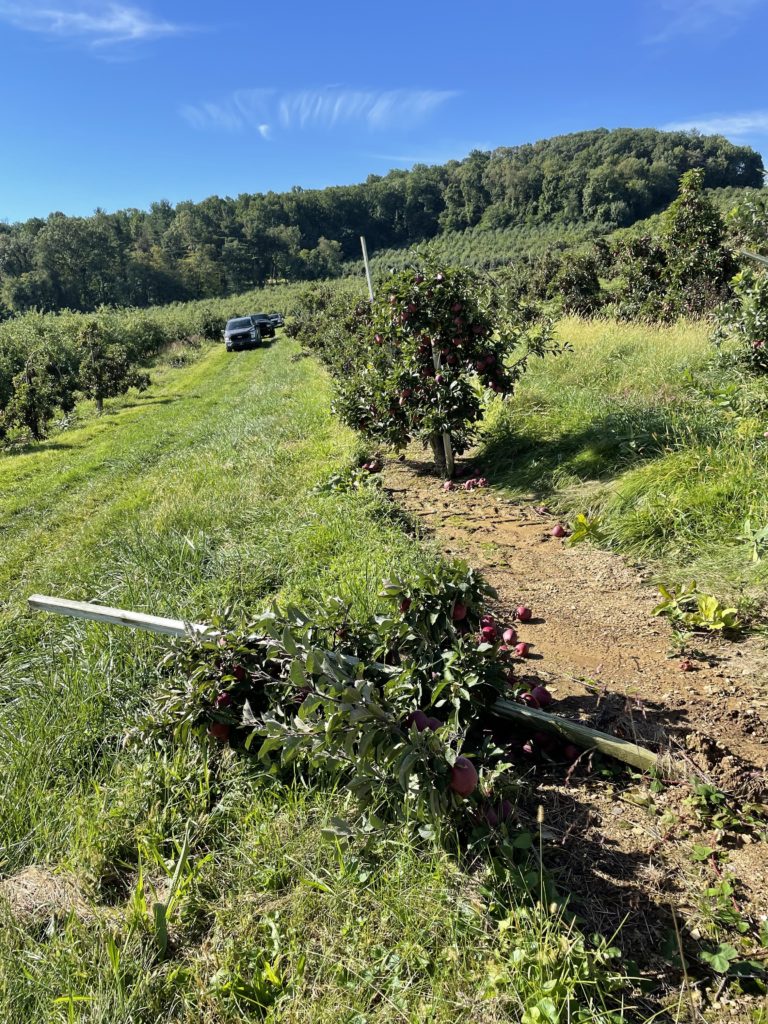
Once the apples are safely delivered, it doesn’t mean Lott Zost gets paid in full. Instead, the companies store the apples until they have time to process or deliver the fruit, only compensating the grower a portion until the producers get paid. “We’re taking on a risk,” Lott Zost acknowledges.
These industry customs mean the growers won’t see the final, full paycheck until a year after the harvest season ends. “The income trailing into the following year buffers us if the following crop is light or gets damaged.” Lott Zost says.
As an employer of 25 full-time employees and 45 seasonal workers, Lott Zost and her family must diligently manage their finances. “This two-year income gap creates a buffer for a bad year,” Jim Lott says. “But, we’re out of luck if we get two bad years in a row.”
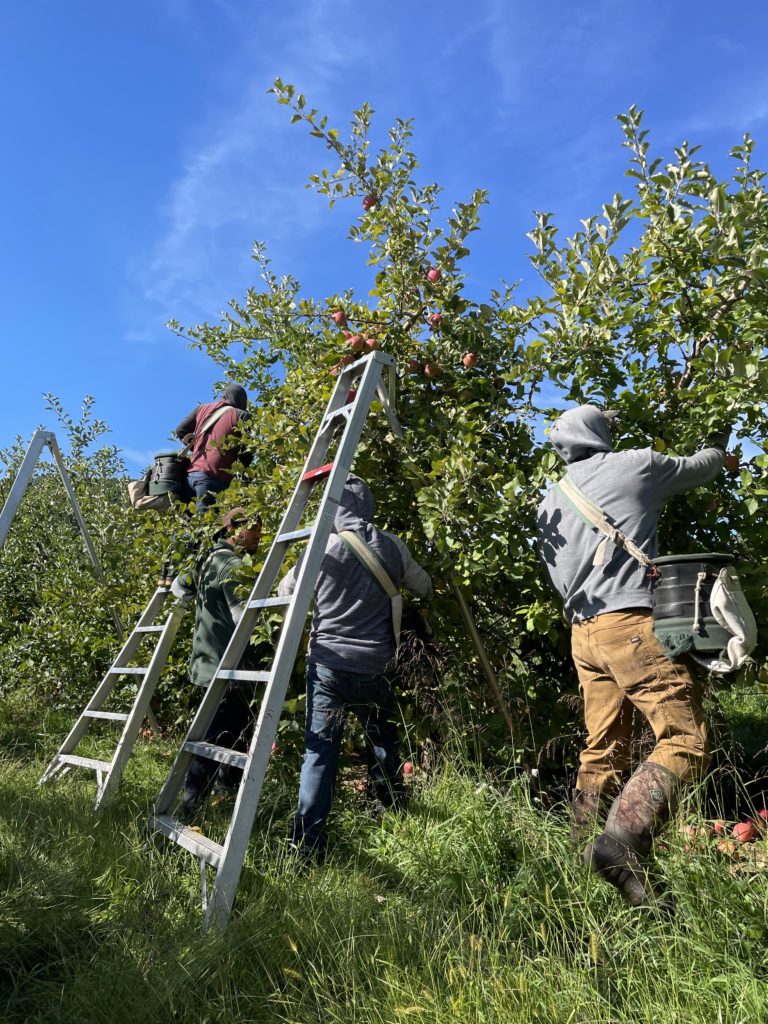
During harvest season, the crew picks every single apple by hand. This means COVID-related labor shortages presented a major obstacle. When they finally do arrive, many domestic seasonal workers can walk off the job at any time. “There’s no commitment,” Lott Zost says. “If we have a light crop, they go next door to our competitors.” From the workers’ perspective, a lack of labor protections means the freedom to leave is paramount to their safety.
Most of the pickers with the Lotts, however, are on work visas from Mexico. Unlike domestic seasonal workers, they sign contracts to work in the United States. Housing and safety inspections are a regular occurrence. A single violation means the Lotts lose their labor force — stressful, but necessary for the protection of their employees.
In addition to immigration laws, Lott Zost must stay up to date with the food safety laws. Officials audit everything from the proximity of bathrooms to unsanctioned sports drinks in the orchards. A quick glance at the Food Safety Modernization Act (FSMA) demonstrates the complexity of these laws.
Crew leaders must make sure piece-rate work, or people paid by the number of apples harvested instead of hourly, is equitable. In just ten minutes, pickers can harvest four rows of apples spanning 20 feet. Simple variations such as the side of the hill they’re on, inside or outside rows, and the height of trees impacts a picker’s earnings. Inattentive or inexperienced crew leaders who fail to rotate these jobs impair opportunities for a higher income, damaging morale.
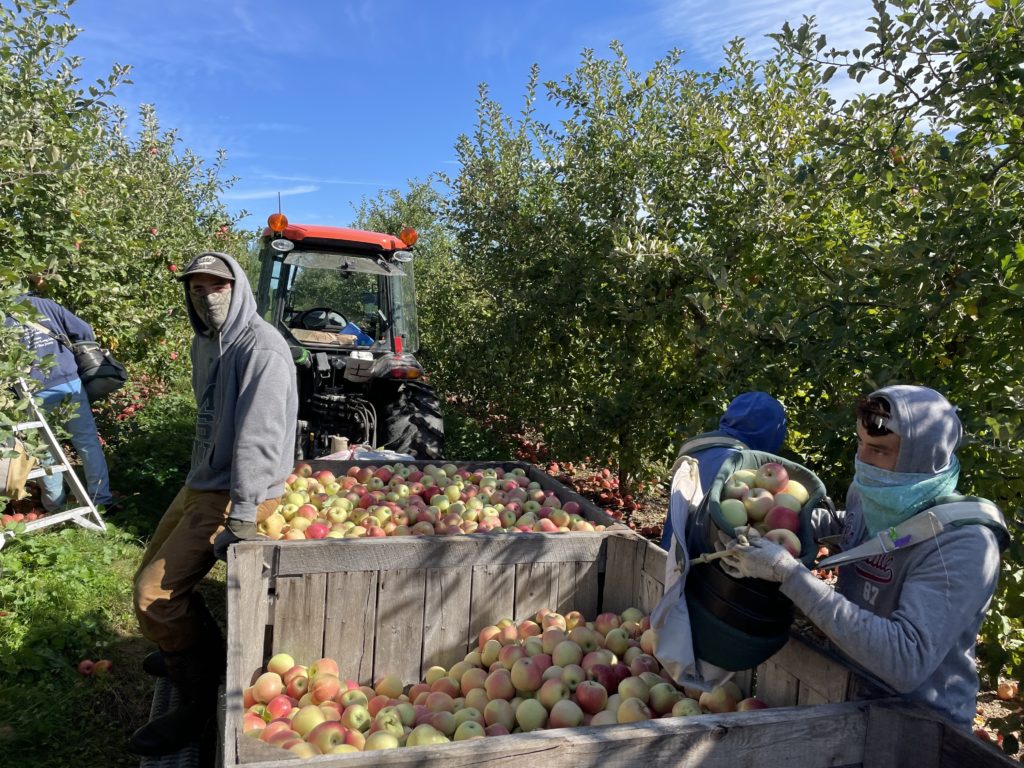
Johnny Rivera, from Mexico, has picked apples for the Lotts for three years. His smile and dark brown eyes beam when he shares his favorite part of the job: eating apples whenever he wants. It’s hot out, about 80 degrees, but his arms and legs are covered. Otherwise, the aphids and sun would irritate his skin.
In order for Lott Zost to communicate with the pickers, she had to learn Spanish. It’s been a long and challenging process, but it’s another necessity of her business. Her younger brother, Greg Lott, recently joined the family business. While he’s stumbling through translations, requesting they speak “de-spa-ci-to,” Greg Lott makes up for it with this equipment knowledge. As independent growers, they must also fix their own equipment. The siblings help each other out.
Zost Lott started working on the farm after she earned a degree in Agribusiness Management. She was 23 years old, supervising people twice her age. At present, farming and Hispanic culture is a man-first culture.“23 and a girl, and being 30 and a girl, are not the same,” she says. She had to earn the pickers’ respect. Learning Spanish helped. “We understand each other, unlike ‘white gringos’ who don’t speak their language.”
Throughout this article, we’ve highlighted the many hurdles fruit growers must overcome. Dr. Daniel Weber, a PennState Extension educator, explains that these challenges are everywhere. Families all over the country face competition, labor shortages, new diseases, unexpected insects, climatic shifts, volatile markets, and efficiency issues.
“Tough years come and go,” Jim Lott says. The family constantly works to solve problems. “We’re always changing the plan last minute.” Sarah Lott Zost says. “Which trade-off are we willing to make?”
You might be wondering, why does Lott Zost continue to grow apples with all these challenges? One reward occurs annually when people come from all over the country to adore their fruit.
During the weekends of October 2-3 and 9-10, the Lotts will share their apples at The National Apple Harvest Festival held in Adams County. Music, food, crafts, demonstrations, and contests will celebrate the apple at 615 Narrows Rd, Biglerville, PA. Mac Lott, Sarah’s grandfather, co-led the very first Apple Harvest Festival back in 1965.
Those who go might appreciate all that went into those delicious, crisp apples. It’s clearly not as simple as the Johnny Appleseed legends: plant the seed, and harvest the fruit.
The questions
Apple growing is simultaneously dependent on and in conflict with nature. Bonnie Brae Fruit Farm is no exception. How can we balance co-existing alongside nature, while also subduing it enough to cultivate our own food?
The Lotts maintain the tenacity to continue for many generations, but families across America are selling their farms. What can we do to support local farms?
Related links and sources: Jamie Kinsley’s Dissertation “The Garden in the Machine: Homesteading, Local Foodways, and Agriculture in York, Pennsylvania;” PennState Extension office; Photos by Jamie Kinsley
— By JAMIE NOERPEL and JIM McCLURE


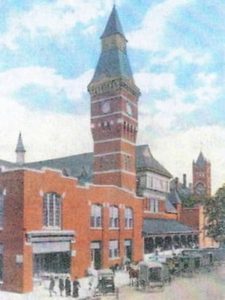
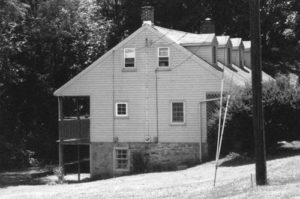
Pingback: when-latinos-came-to-york-county-they-brought-their-own-cooks